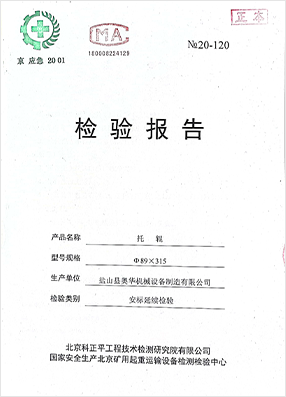 Afrikaans
Afrikaans  Albanian
Albanian  Amharic
Amharic  Arabic
Arabic  Armenian
Armenian  Azerbaijani
Azerbaijani  Basque
Basque  Belarusian
Belarusian  Bengali
Bengali  Bosnian
Bosnian  Bulgarian
Bulgarian  Catalan
Catalan  Cebuano
Cebuano  Corsican
Corsican  Croatian
Croatian  Czech
Czech  Danish
Danish  Dutch
Dutch  English
English  Esperanto
Esperanto  Estonian
Estonian  Finnish
Finnish  French
French  Frisian
Frisian  Galician
Galician  Georgian
Georgian  German
German  Greek
Greek  Gujarati
Gujarati  Haitian Creole
Haitian Creole  hausa
hausa  hawaiian
hawaiian  Hebrew
Hebrew  Hindi
Hindi  Miao
Miao  Hungarian
Hungarian  Icelandic
Icelandic  igbo
igbo  Indonesian
Indonesian  irish
irish  Italian
Italian  Japanese
Japanese  Javanese
Javanese  Kannada
Kannada  kazakh
kazakh  Khmer
Khmer  Rwandese
Rwandese  Korean
Korean  Kurdish
Kurdish  Kyrgyz
Kyrgyz  Lao
Lao  Latin
Latin  Latvian
Latvian  Lithuanian
Lithuanian  Luxembourgish
Luxembourgish  Macedonian
Macedonian  Malgashi
Malgashi  Malay
Malay  Malayalam
Malayalam  Maltese
Maltese  Maori
Maori  Marathi
Marathi  Mongolian
Mongolian  Myanmar
Myanmar  Nepali
Nepali  Norwegian
Norwegian  Norwegian
Norwegian  Occitan
Occitan  Pashto
Pashto  Persian
Persian  Polish
Polish  Portuguese
Portuguese  Punjabi
Punjabi  Romanian
Romanian  Russian
Russian  Samoan
Samoan  Scottish Gaelic
Scottish Gaelic  Serbian
Serbian  Sesotho
Sesotho  Shona
Shona  Sindhi
Sindhi  Sinhala
Sinhala  Slovak
Slovak  Slovenian
Slovenian  Somali
Somali  Spanish
Spanish  Sundanese
Sundanese  Swahili
Swahili  Swedish
Swedish  Tagalog
Tagalog  Tajik
Tajik  Tamil
Tamil  Tatar
Tatar  Telugu
Telugu  Thai
Thai  Turkish
Turkish  Turkmen
Turkmen  Ukrainian
Ukrainian  Urdu
Urdu  Uighur
Uighur  Uzbek
Uzbek  Vietnamese
Vietnamese  Welsh
Welsh  Bantu
Bantu  Yiddish
Yiddish  Yoruba
Yoruba  Zulu
Zulu Different Types of Idlers Used in Belt Conveyor Systems and Their Functions
Types of Idlers in Belt Conveyors
Belt conveyors are essential components in various industries, facilitating the efficient transportation of materials over considerable distances. One significant aspect of their design is the idler system, which plays a crucial role in ensuring the smooth operation and longevity of the conveyor. Idlers are the rollers that support the conveyor belt, reducing friction and maintaining the belt alignment. Understanding the different types of idlers can help in selecting the right one for specific applications, optimizing performance, and minimizing maintenance costs.
1. Carrying Idlers
Carrying idlers are fundamental to supporting the load on the conveyor belt. These idlers are typically arranged in a set of three, forming a V shape to stabilize the belt and center the load, preventing spillage. Carrying idlers come in various sizes and designs, depending on the conveyor's width and the type of bulk material being transported. Common configurations include flat, inclined, and return idlers, each serving a specific purpose in load distribution.
2. Return Idlers
Return idlers are employed on the return side of the conveyor belt, where the belt returns to the head pulley after delivering its load. These idlers are typically flat and ensure that the belt remains in contact with the conveyor frame while returning. Proper design and maintenance of return idlers are vital to prevent belt sagging and to maintain belt tension, which ultimately contributes to the efficiency of the conveyor system.
Impact idlers are strategically placed at points where material is loaded onto the conveyor. They are designed to absorb the shock and impact from heavy loads falling onto the conveyor belt. The construction of impact idlers typically includes shock-absorbing materials, which protect the belt from damage and extend its lifespan. The correct use of impact idlers reduces the wear on the conveyor system, ensuring a more reliable operation.
types of idler in belt conveyor

4. Training Idlers
Training idlers, also known as belt training rollers, are used to guide the conveyor belt and maintain its proper alignment. Misalignment can lead to uneven wear on the belt and potential operational failures. Training idlers are typically mounted at strategic locations to correct belt drift. They come in both fixed and adjustable designs, allowing operators to fine-tune the idler position for optimal belt tracking.
5. Self-Aligning Idlers
Self-aligning idlers are an advanced version of training idlers. These idlers automatically adjust to the belt's position, correcting any misalignment as it occurs. They are particularly beneficial in applications where the belt is subjected to varying loads, ensuring consistent performance without the need for constant manual adjustments. This feature reduces maintenance efforts and enhances the reliability of the conveyor system.
6. Rubber Disc Idlers
Rubber disc idlers are designed to reduce friction between the idler and the conveyor belt. These idlers feature a series of rubber discs, which provide minimal contact area with the belt, thereby decreasing wear and energy consumption. They are ideal for high-speed conveyor applications, where traditional steel idlers may lead to excessive belt wear.
Conclusion
Selecting the appropriate type of idler for a belt conveyor system is crucial for maximizing efficiency, minimizing maintenance costs, and ensuring the longevity of both the conveyor belt and the entire system. Each type of idler serves a specific purpose and is designed to address particular challenges in material handling. By understanding these different types of idlers, industries can optimize their conveyor operations, leading to improved productivity and reduced downtime.
-
Revolutionizing Conveyor Reliability with Advanced Rubber Lagging PulleysNewsJul.22,2025
-
Powering Precision and Durability with Expert Manufacturers of Conveyor ComponentsNewsJul.22,2025
-
Optimizing Conveyor Systems with Advanced Conveyor AccessoriesNewsJul.22,2025
-
Maximize Conveyor Efficiency with Quality Conveyor Idler PulleysNewsJul.22,2025
-
Future-Proof Your Conveyor System with High-Performance Polyurethane RollerNewsJul.22,2025
-
Driving Efficiency Forward with Quality Idlers and RollersNewsJul.22,2025





























